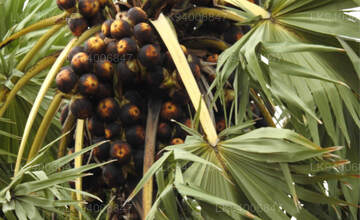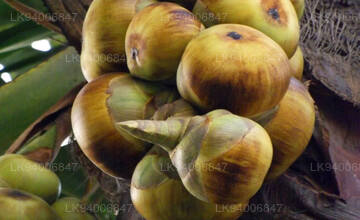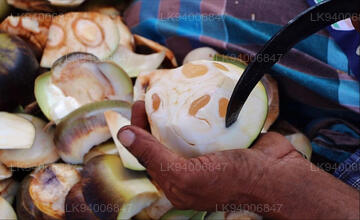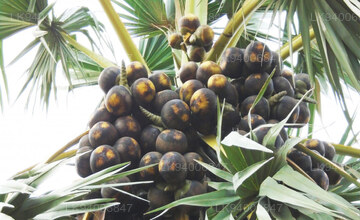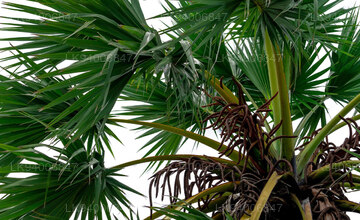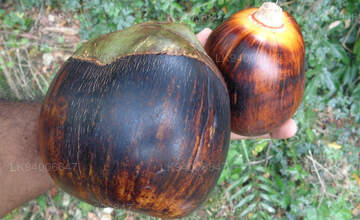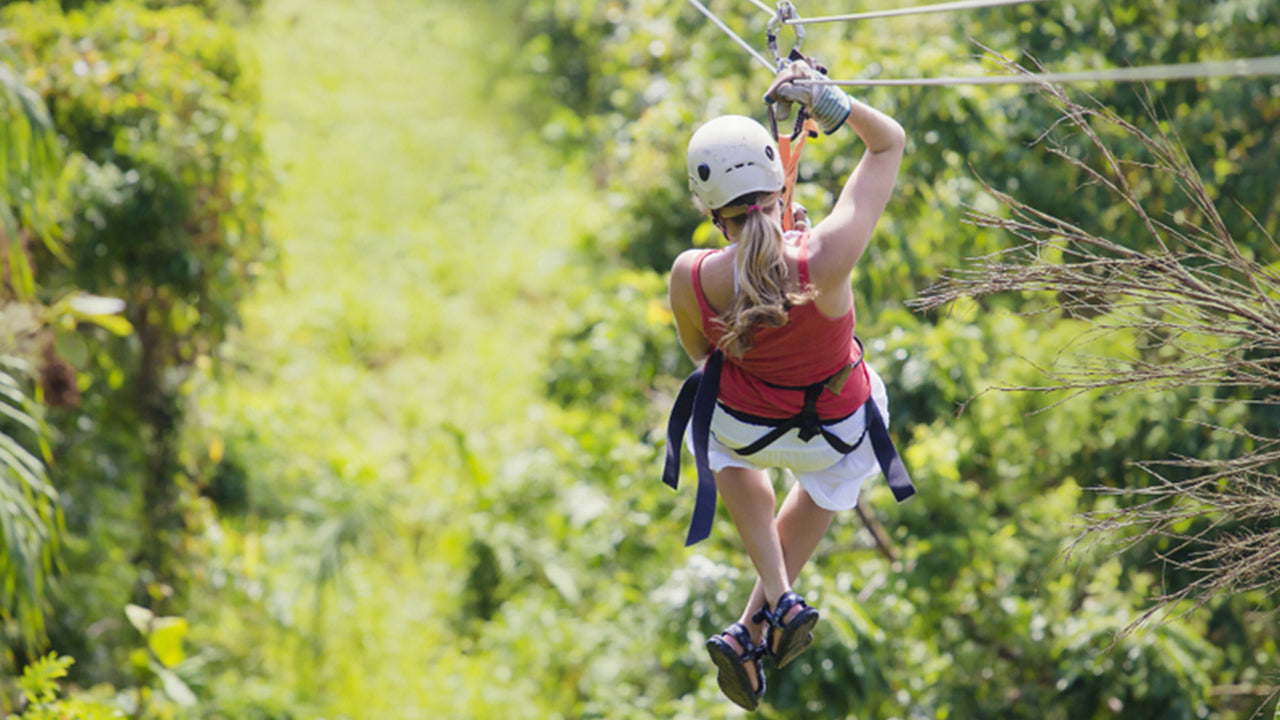Borassus flabellifer
Borassus flabellifer, commonly known as doub palm, palmyra palm, tala or tal palm, toddy palm, wine palm or ice apple, is native to South Asia and Southeast Asia. It is reportedly naturalized in Socotra and parts of China.
Borassus flabellifer is a robust tree and can reach a height of 30 metres (98 ft). The trunk is grey, robust and ringed with leaf scars; old leaves remain attached to the trunk for several years before falling cleanly. The leaves are fan-shaped and 3 m (9.8 ft) long, with robust black teeth on the petiole margins. Like all Borassus species, B. flabellifer is dioecious with male and female flowers on separate plants. The male flowers are less than 1 cm long and form semi-circular clusters, which are hidden beneath scale-like bracts within the catkin-like inflorescences. In contrast, the female flowers are golfball-sized and solitary, sitting upon the surface of the inflorescence axis. After pollination, these blooms develop into fleshy fruits 15–25 cm wide, each containing 1-3 seeds. The fruits are black to brown with sweet, fibrous pulp and each seed is enclosed within a woody endocarp. Young palmyra seedlings grow slowly, producing only a few leaves each year (establishment phase), but at an as yet undetermined time, they grow rapidly, producing a substantial stem.
The fruit (palmyra fruit) measures 10 cm (3.9 in) to 18 cm (7.1 in) in diameter, has a black husk, and is borne in clusters. The top portion of the fruit must be cut off to reveal the sweet jelly seed sockets, translucent pale-white, similar to that of the lychee but with a milder flavor and no pit. The sweet jelly seed sockets occur in combinations of two, three or four seeds inside the fruit. The jelly part of the fruit is covered with a thin, yellowish-brown skin. These are known to contain watery fluid inside the fleshy white body. The soft orange-yellow mesocarp pulp of the ripe fruit is sugary, dense and edible, rich in vitamins A and C.[citation needed] They also contain bitter compound called flabelliferrins, which are steroidal saponins.
The conventional way this fruit is eaten is when the outer casing is still unripe while the seeds are eaten as the fruit. But if the entire fruit is left to ripen, the fibrous outer layer of the palm fruits can also be eaten raw, boiled, or roasted. When this happens, the fruit takes a purple-blackish hue and tastes similar to coconut flesh. The skin is also eaten as part of the fruit similar to how mango skins are often consumed along with the fruit. Bengalis have perfected the art of making various sweet dishes with the yellowish viscous fluid substance obtained from a ripe palm fruit. These include mustard oil-fried (alternately sunflower oil-fried) taal-er bora "palmyra vadas" or mixed with thickened milk to prepare taal-kheer.
In medicine Uses The roots are cooling, restorative, diuretic, stimulant and antiphiogistic. They are useful in hyperdipsia, burning sensation, strangury and inflammation. The juice of the leaf stalks and young roots is good for gastric catarrh and hiccough. The ash obtained by burning the inflorescene is a good antacid and antiperiodic, and is useful in hyperacidity, heart bum, bilious fever, splenomegaly, haepatomegaly and skin diseases. The fruits are sweet, cooling, laxative, sedative, anthelmintic, depurative, styptic, stomachic, aphrodisiac and tonic. They are useful in hyperdipsia, burning sensation, dyspepsia, flatulence, colic, constipation, intestinal worms, leprosy, skin diseases, haemorrhages, haemoptysis.
Borassus flabellifer is part of the catalog of ayurvedic medicinal plants of Sri Lanka.

